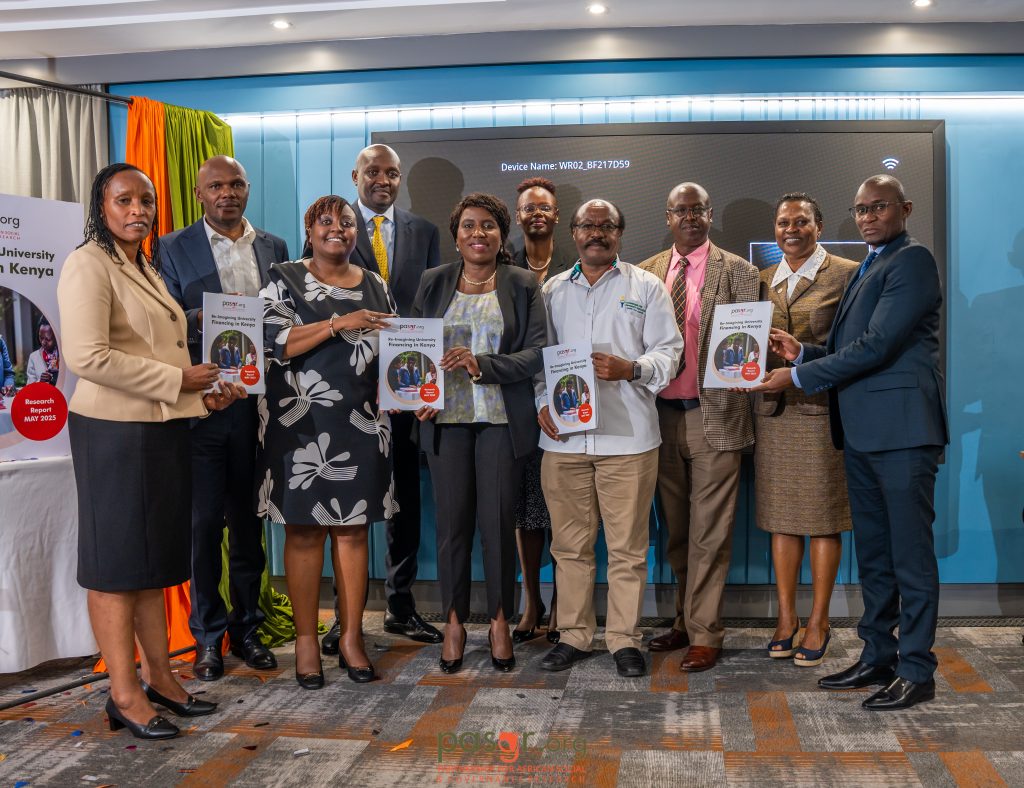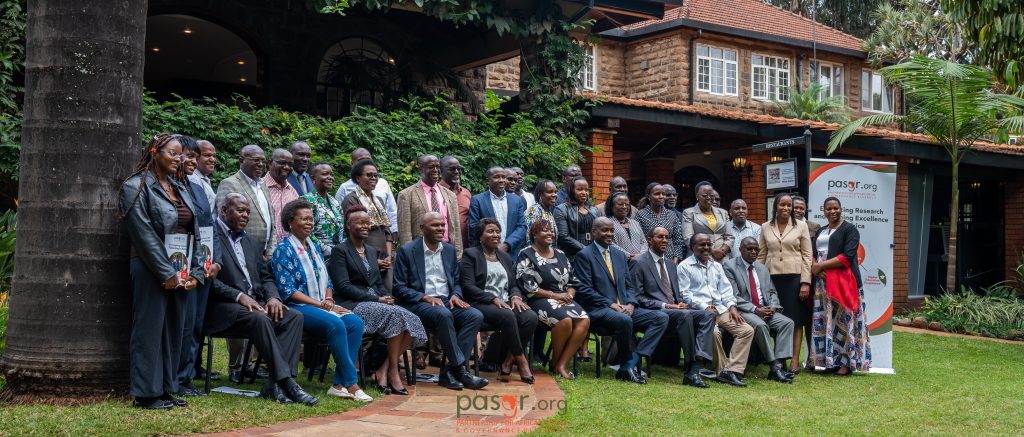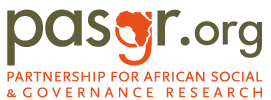Contact Info
- 6th Floor, I & M Building 2nd Ngong Avenue, Upper Hill
- +254 (0)20 2985000; +254 (0)729 111031 / +254 (0)731 000065
- info@pasgr.org
- Office Hrs: Today 9.00am to 6.00pm
On Friday, May 9, 2025, PASGR officially launched the findings of its two-year study on Re-imagining University Financing in Kenya at an event officiated by Dr Beatrice Muganda Inyangala, the Principal Secretary, State Department of Higher Education, Ministry of Education, Kenya.
The new university funding model has the potential to promote equity and quality in higher education by creating alternatives for financial resources, according to the study. The study states that the new model shifts the focus from equality to equity in funding university education, which benefits the vulnerable and extremely needy students. The model provides for a variable loan and scholarship funding, where the vulnerable and extremely needy get more funding and less loans while the less needy gets less scholarship and pays more loan. “Key findings suggest that the New Funding Model (NFM) provides a theoretically firm foundation with great potential to promote equitable access to sustainable quality higher education in Kenya,” says the report.
The study was conducted by the Partnership for African Social and Governance Research (PASGR) and involved interviewing more than 1000 students in 34 universities as well as 212 key stakeholders including policy makers, parents, civil society and the national government administration officials. Even so, the report recognises that the model faces the challenge of overreliance on the national government for funding. Consequently, the report recommends that the universities should pursue alternative means of generating revenues. They should commercialise their services and assets, seek out grants from philanthropies and establish and strengthen alumni associations to generate their own incomes and achieve financial stability.
At the same time, the research recommends formulation of a comprehensive university funding framework that addresses the various challenges facing students on one side, and the higher education institutions on the other. Additionally, there is a need for a framework for public-private partnerships to mobilise resources to support higher education. The study observes that there are broader issues of governance and ethics underlying these challenges, which need to be addressed at all levels. The study suggests that the model needs to be reviewed to address some of the challenges experienced. This included reviewing the banding system and significantly reducing the amounts of cash allocations to realistic levels. In undertaking the reforms, the research recommends that the government should carry out a pilot project to evaluate the suitability of the tools for assessing students’ needs and the overall viability of the model.

The study recommends a comprehensive communication strategy and deploys the appropriate channels to reach students, parents and communities. Universities and other higher education learning institutions need to be involved in all the processes and equipped to provide the relevant information to students. Similarly, members of the national government administration such as county and sub-county commissioners, chiefs and their assistants ought to be involved to create awareness on the new model. The research recommends reforming higher education institutions and in particular, tackling issues such as financial management, fiscal independence from the government and effective channels for communication to ensure alignment among key stakeholders.
Further, there is a need for proper alignment and coordination among the various institutions and players involved in the implementation of the model. These include the Ministry of Education, Higher Education Loans Board (HELB), Universities Fund (UF), Kenya Universities and Colleges Placement Service (KUCCPS), universities and technical and vocational training institutions. The overall goal of the research was to identify effective, innovative, and sustainable practices for continued improvement as the model was rolled out, and to inform future policy and practice for increased equitable access to higher education.

Its specific objectives were to: explore stakeholder and official perspectives on the new funding model to understand its purpose, design, and rationale; identify and analyse various aspects of the funding model design to understand how they interact with each other and impact equitable access to quality education; describe the implementation of the new funding model and its impact on promoting equitable access to quality higher education; and, assess the sustainability of the new funding model to determine its long-term viability and impact on equitable access to quality higher education.
This study was funded by a grant from the Carnegie Corporation of New York. Read full report here.
A4EA AAU advanced research design African universities agriculture Applied Quantitative Methods APSP ARD CABE call for applications cash transfers COVID-19 employment energy EOI Featured higher education IDS INCLUDE Job opportunity LEAP Africa MMRC MRPP opportunities opportunity PAMOJA TRUST partnerships PASGR PDT pedagogy PedaL press release professional development and training professional training public policy Research research methods scholarships social protection Social sciences University of Ibadan University of Pretoria utafiti sera vacancy Youth employment

6th Floor, I & M Building
2nd Ngong Avenue, Upper Hill
P.O. Box 76418-00508
Nairobi, Kenya
Email: info@pasgr.org
Tel: +254 (0)20 2985000;
+254 (0)729 111031 / +254 (0)731 000065
Legal counsel provided by Hurwit & Associates and Muthoga Gaturu & Co. Advocates
